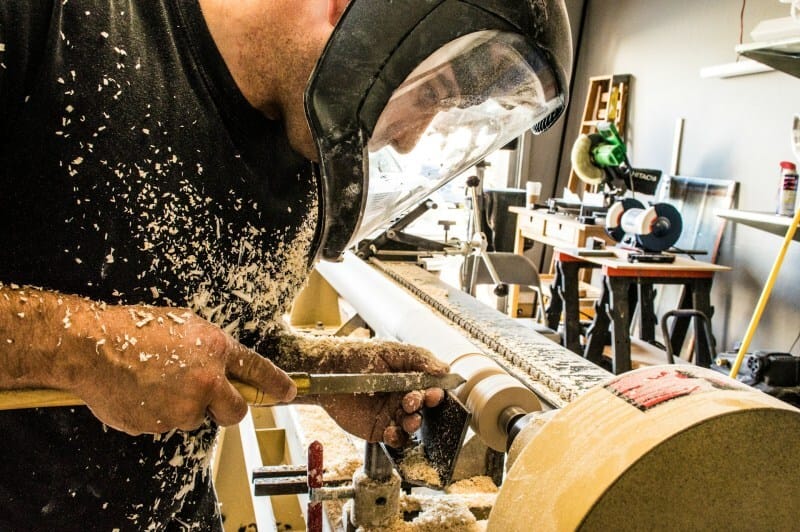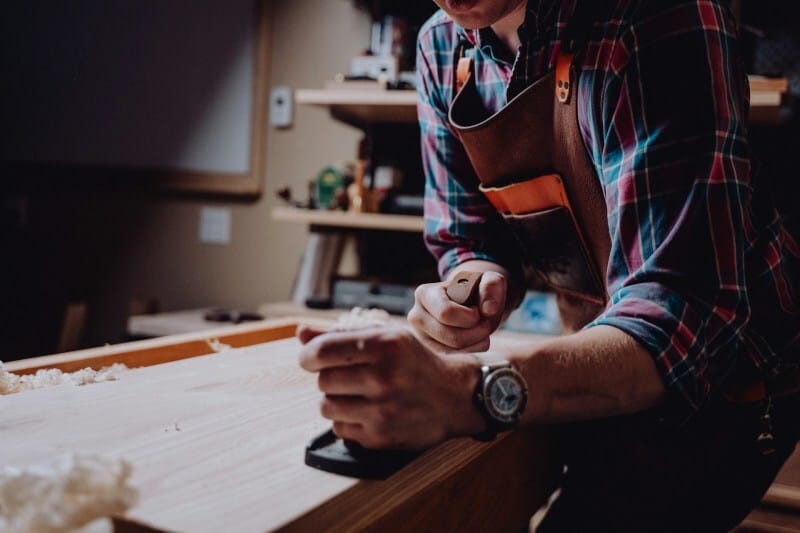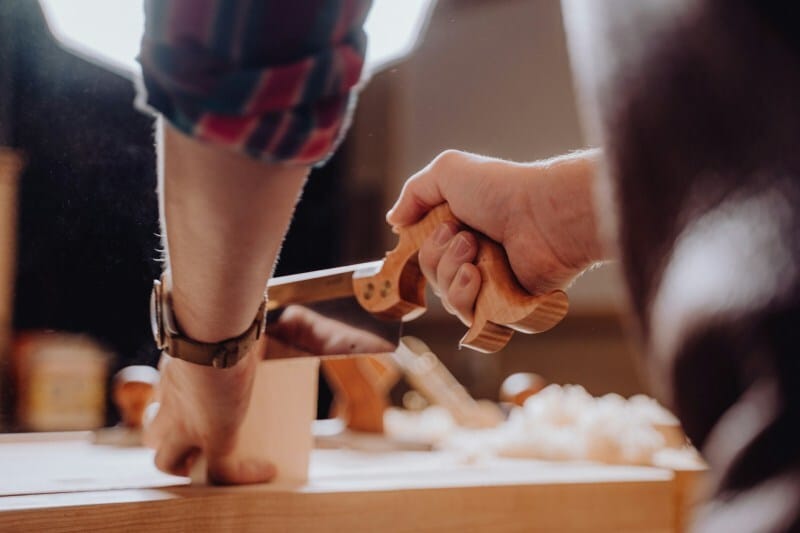A good table shows its worth the first time your hand meets the surface. The edges feel settled, the grain reads like a map, and joinery lines sit calm and true. Those quiet markers matter long after a trend passes.
People who collect well-made pieces often start with one simple change. They switch from mass production to a maker who knows their wood and their tools. Many discover Parkman Woodworks offers that blend of thoughtful design and steady build quality.

Photo by cottonbro studio
Material Honesty And Longevity
Handmade work begins with clear material choices and patient mills. An artisan studies moisture content, grain direction, and structural needs before a single cut. That care helps resist cupping, warping, and early surface fatigue over the years.
Solid joinery turns raw boards into a stable body. Mortise and tenon, dovetails, and drawbore pegs distribute stress across fibers. The result is a quieter piece that ages with fewer complaints during seasonal shifts.
Durability also depends on wood species and finish schedules. Public resources like the Forest Service Wood Handbook explain density, movement, and service life guidelines for hardwoods. Their tables help match use cases to wood behavior, which supports better decisions at the bench and at home. See the Wood Handbook from the U.S. Forest Service for reference, which remains a time-tested guide.

Human-Scaled Design And Comfort
Handmade design favors the way bodies move through space. Seat pans hold the right tilt, edges ease contact points, and leg clearances welcome different users. Those small moves add up during long meals or late work sessions.
Comfort improves when proportions follow real rooms rather than showroom grids. A narrower top can free walking lanes without stealing serving space. A lower rail can spare knees and keep stretched legs from knocking through late conversations.
Artisans also tune resilience where it counts. They add a slight chamfer where bags land, and thicken a stretcher where feet rest. The table looks light, yet it stands ready for daily scuffs and informal use.

Sustainability With Local Materials
Shorter supply chains reduce transit miles and waste. Many studios source from regional mills, urban salvage programs, or storm-fallen lots. Local sourcing supports community economies and keeps character wood in circulation rather than landfill piles.
Finish choices affect indoor air for years. Lower-VOC products help reduce lingering fumes in tight homes and studios. The U.S. Environmental Protection Agency offers guidance on volatile organic compounds and indoor air quality for practical review. Their notes help buyers compare finish options with fewer unknowns in the mix.
Repair beats replacement when a surface gets tired. A solid top can be re-sanded and re-oiled instead of discarded. That single decision keeps bulk waste down and maintains the story carried by the original boards.

Precision, Repair, And Aftercare
A handmade piece ships with serviceable parts and readable joinery. Screws align with pilot holes, levelers adjust cleanly, and drawer runners can be tuned. Owners get something that can be fixed, not only admired.
Good aftercare extends working life without fuss. Wipe up spills within minutes, and renew oil once surface reflection grows dull. Keep direct heat off panel ends, and give seasonal movement room to breathe.
If a top splits, a studio can close the wound without heavy surgery. A loose chair can find new stiffness with a proper glue and clamp session. The structure remains, the repair reads honest, and the piece returns to duty.

Design Consistency For Modern Spaces
Visual calm is easier with measured lines and clean geometry. Handmade work can echo a room’s moldings, floor tone, or ceiling height. Repeating a radius or matching a stain pulls the space together without noise.
Scale matters as much as style labels. A wide loft wall can swallow a store-bought console that looks long on paper. A maker can shift width by a few inches, which often solves the entire layout.
Surface character brings warmth to concrete and glass. Quarter-sawn oak, rift white oak, or straight-grained walnut keep patterns relaxed. The room reads lighter, even when forms stay robust and grounded.
How To Choose A Piece That Will Age Well
A few practical checks can separate a fine build from a fast build. These points help during studio visits and finish-room inspections. Keep this list handy, and compare notes across makers.
Look for joinery that matches the job, not fasteners hiding movement.
Check for level across diagonals, and test for racking by gentle side pressure.
Ask about wood moisture at assembly and the finish schedule used.
Confirm replacement parts, surface care guidance, and service options after delivery.
Commissioning For Function, Not Hype
The best commissions begin with a real use case. Share plate counts, laptop sizes, and the closest outlet to your desk. Measurements guide leg spacing, drawer depth, and where wires should pass without snags.
Bring swatches and flooring photos to the first design talk. A good studio will test stains and oils under your light, not only theirs. Photo checks prevent surprises that show up after the truck leaves.
Be blunt about maintenance habits. If you skip coasters, ask for a forgiving finish system. If you host weekly, choose a tougher topcoat, and accept a little patina as the years add up.
Why Parkman-Level Handwork Fits Creative Homes
Homes with art and design at the center need furniture that does not compete. Good pieces support the view, frame the vignette, and hold their ground with quiet confidence. They read considered yet never loud.
Studios like Parkman build with local hardwoods and steady joinery. The goal is daily use without babying, and service paths when life happens. Your table should welcome projects, coffee rings, and candlelight with equal ease.
A well-made desk can also hold tools and cables without visual clutter. Thoughtful routing, protected edges, and stable tops help keep focus on the work. The piece becomes a reliable collaborator rather than a fragile showpiece.
Bringing Handwork Into Daily Life
Start with one object you touch every day, then choose the build you will not need to replace. Measure your room, talk through the details, and pick materials that match your habits. You will gain calm surfaces, honest joinery, and a piece that stays useful for many years.
The post What are the Benefits of Handcrafted Furniture Design? appeared first on Moss and Fog.
